No
war has gotten more time on theater screens than World War II. With its all-encompassing
nature, diverse cast of characters and battles, and for many relatively clearer
tale of good against evil, it makes for a very attractive cinematic subject. Also,
being so recent, there is still plenty of original gear to use from tanks to
uniforms to guns. That certainly saves filmmakers the trouble of building
replicas from scratch. With so many World War II films out there, I thought I’d
make a list of ten great films. This is not a list of the top ten films, though
I only chose ones I consider to be at the least very good. I have tried to make a list that covers various
aspects from the Holocaust to partisan warfare to the Nazi hierarchy. If you want to learn some history through movies, than watch these
ten.
Before
starting the list I have to recommend HBO’s Band
of Brothers and The Pacific.
They’re mini-series, not movies, but they are must-see due to their accuracy. I should also note that I only include films
based directly on real people or events, so no Saving Private Ryan or one of those special mission action films
like Dirty Dozen.
#1:
City of Life and Death (2009)
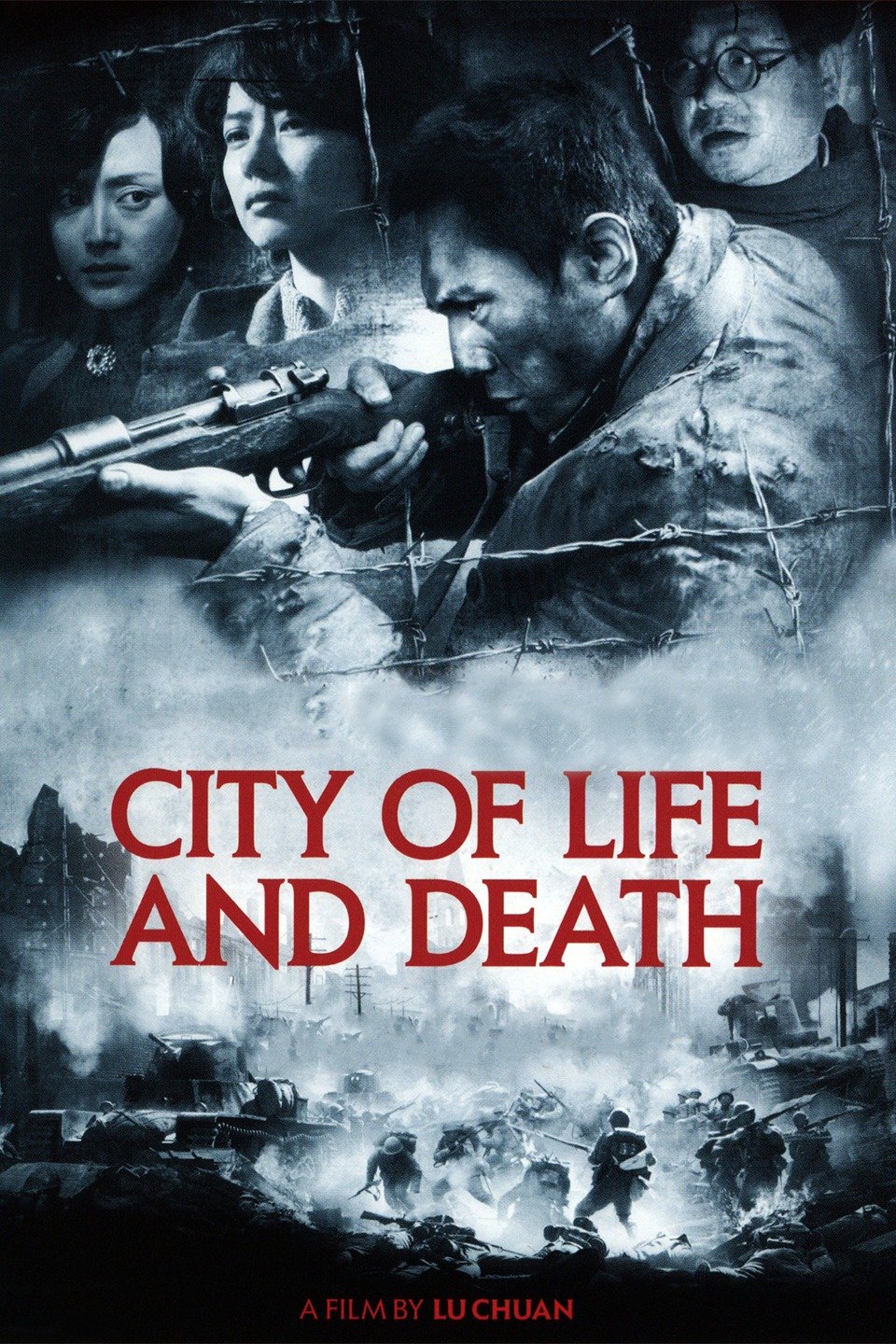
The
Sino-Japanese War does not get much play in Western film. There are plenty of
Chinese movies on the subject, but they're hard to track down or rife with propaganda. One
sub-topic that has lent itself well to film is the Rape of Nanking. In late 1937 the
Japanese captured the Chinese capital of Nanking and embarked on one of the
greatest streaks of terror in human history. At least tens of thousands of Chinese civilians
were slaughtered, often with torturous methods. Almost as many women, ranging
from young girls to the elderly, were raped, and many of these victims were
killed afterwards. It’s a war crime matching and usually exceeding any incident
in Hitler’s war with Russia.
I
have seen three films on the Rape of Nanking. There’s the German John Rabe, which is just okay. The
Sino-American production Flowers of War
is a good small story set within the greater event. But Lu Chuan’s City of Life and Death is the one that
captures the real scale of the atrocity. It is filmed in black and white in
order to make the violent images more palatable, because there are a lot. There
are scenes of soldiers sexually assaulting women. There is one notable
sequence in which Chinese POWs are mowed down by machines guns, bayoneted, and burned alive. The film captures the long, horrid slog
of the Rape of Nanking. Character-wise, it doesn’t spend much time on the
Europeans and Americans who helped rescue thousands of Chinese from death in the Civilian Safety Zone. It prefers to focus more on the Chinese themselves. Also, with some controversy
in China, Lu Chuan decided to feature a sympathetic Japanese soldier. This
character is actually one of the more interesting elements of the film. He
doesn’t participate in the crimes, but finds himself too
powerless to do anything to oppose them, leading to an overwhelming sense of guilt.
Overall,
City of Life and Death is a grim
film, but only scratches the surface of what happened in the Rape of Nanking.
That should tell you something about the scale of what really happened.
Relevant
Recommendation: City of Flowers
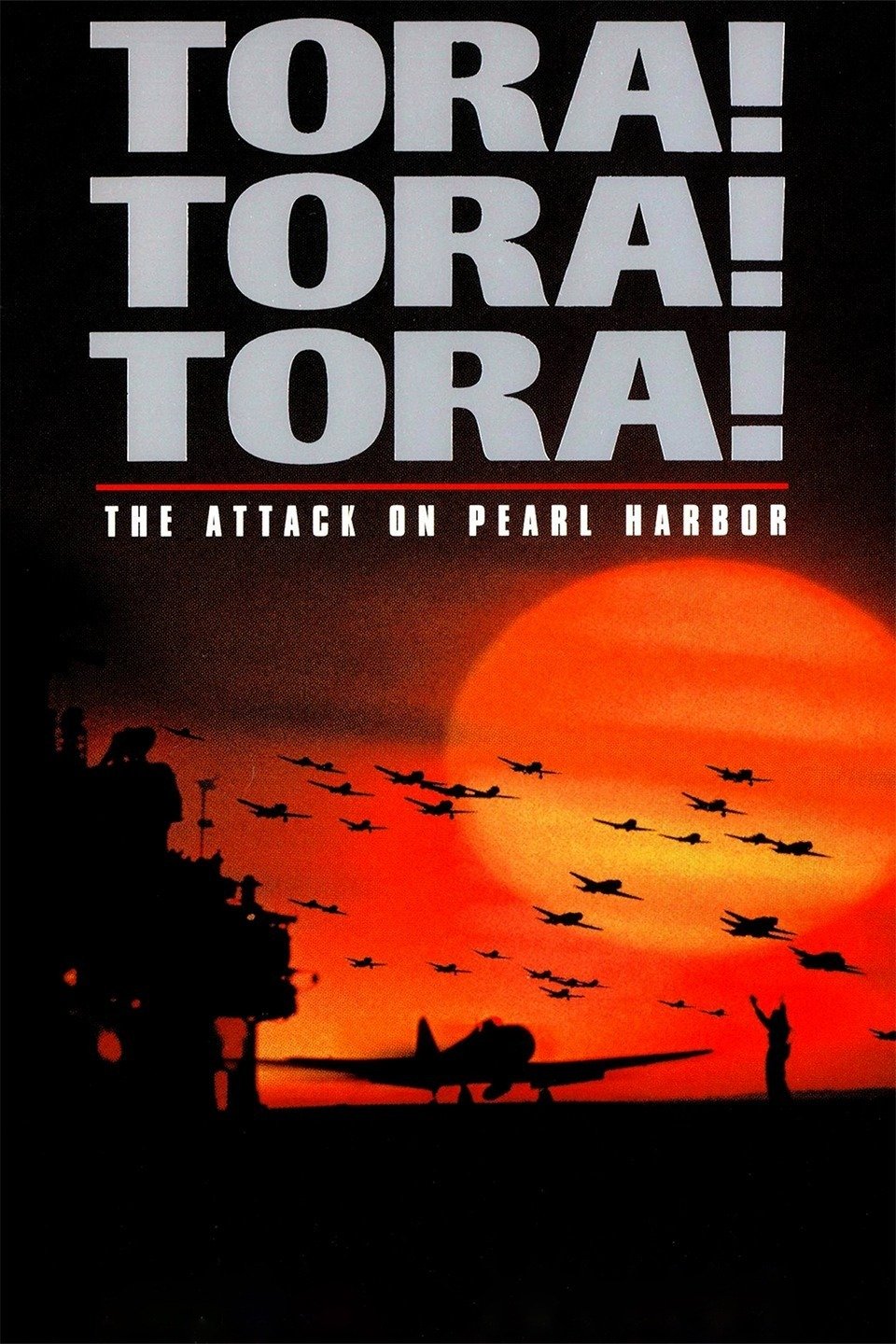
#2:
Tora! Tora! Tora! (1971)

Forget
Michael Bay’s Pearl Harbor. This is
the definitive cinematic account of the Japanese surprise attack on Pearl
Harbor. One of many three-hour battle epics from the 60s and 70s, Tora is a joint American-Japanese
venture. The American scenes were filmed by Richard Fleischer and the Japanese
by Toshio Masuda and Kinji Fukasaku. They were then edited together to make
what is a near-documentary of real events. Actors were chosen more for their
physical similarities and ability to portray a certain character than for star power, a departure from other epics such Longest Day and A Bridge Too Far (cinephiles will still recognize many of the names
and faces among the American cast, but there’s nobody on the level of a John
Wayne or Sean Connery).
There’s
no attempt to create any emotional drama outside of the basics of what happened
in late 1941. The film does a great job of quickly setting up why Japan and
America would go to war. It takes its time getting to the attack, showing the
strategizing and practice of the Japanese Navy as it prepares its airstrike.
The American scenes show how military intelligence did predict an attack, but
failed to nail down when and where. The attack itself is marvelous. It’s not as
slick as Michael Bay’s version, but it’s almost a hundred percent accurate. A
couple of the special effects are still amazing today. One example is a flaming
Japanese plane smashing into a hangar. They really used a remote-controlled
plane and flew it into a life-sized set rigged with explosives!
Tora! Tora! Tora! is one of those
movies that you can safely use to teach history with some suspense and
excitement.
Relevant
Recommendation: Midway (2019)
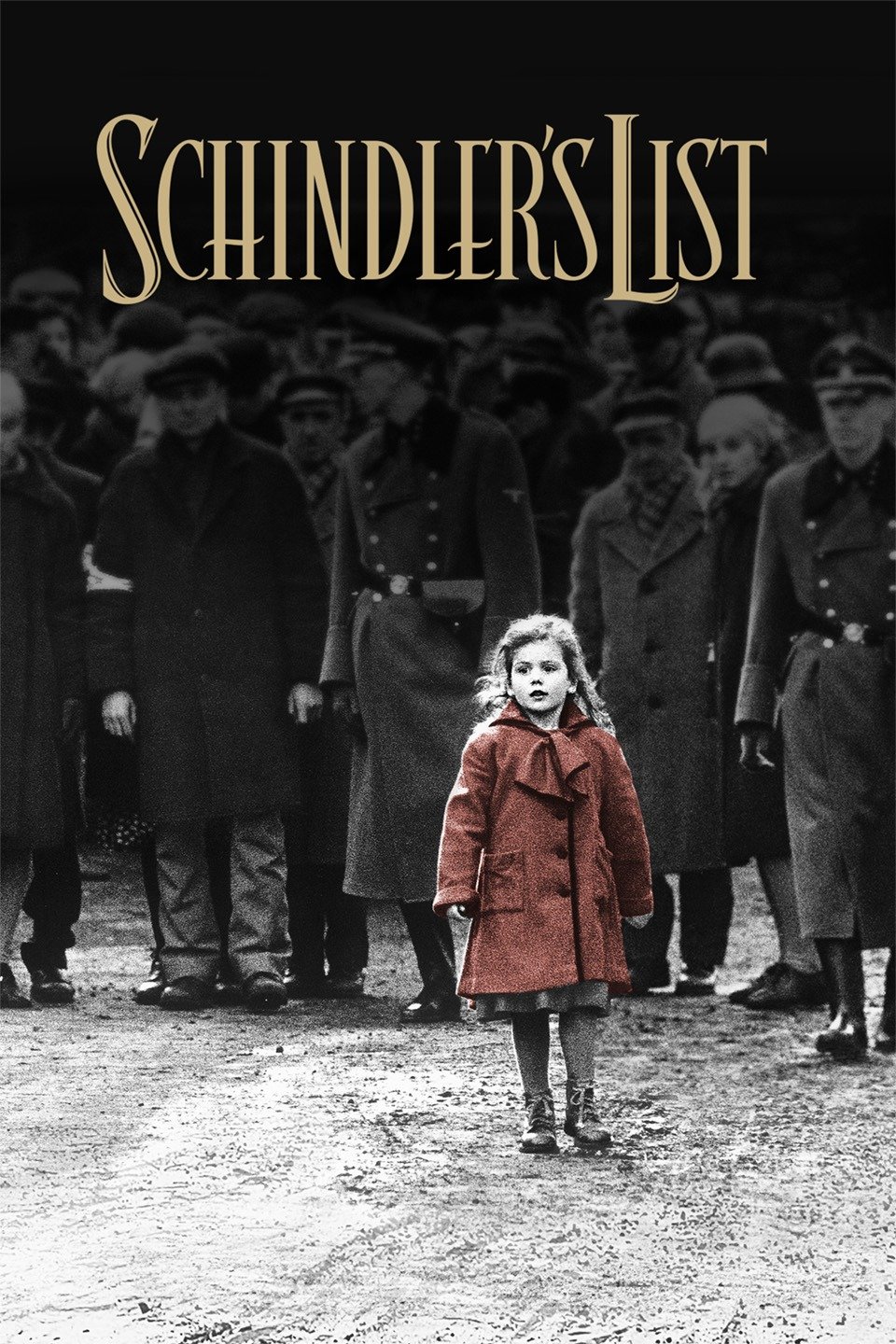
#3:
Schindler’s List (1993)

Of
course this list needs a holocaust film, and why not one that’s actually about
a list? Schindler’s List gave Steven
Spielberg his only Oscar for best picture and his first for best director. It
tells the story of Oskar Schindler (Liam Neeson), a German businessman and
member of the Nazi party who went to conquered Poland to start up a profitable
business. Over time he came to sympathize with the Jews and worked to rescue as
many as he could from execution and the concentration camps. Originally out to
make a buck, he sacrificed his business and his wealth and saved over a
thousand Jews.
Schindler’s List
is
filmed almost entirely in black and white to give it a documentary feel. Also,
as with City of Life and Death, this helps viewers get through some of the
unpleasant scenes. Among these are the liquidation of the Krakow ghetto, a long
and violent sequence in which civilians are rounded up or discarded like pests,
and the exhuming of the liquidation’s victims, which are dug out of the ground
and burned in piles. Thankfully, the film does have an optimistic tone under it
all, with a happy if bittersweet conclusion. Liam Neeson does a good job as
Oskar Schindler and Ben Kingsley just as well as Izthak Stern, his moral
conscience. Ralph Fiennes as SS Commandant Amon Goth might come across as
cartoonishly evil, but his portrayal is actually toned down from reality.
Schindler’s
List is a great holocaust film not only for showing the horror of what
happened, but providing hope and relief.
Relevant
Recommendation: The Pianist (2002)
#4:
To End All Wars (2001)

Prisoner
of war films make up their own sub-genre within the WWII filmography. There’s Stalag 17, The Great Escape, Hart’s War,
and others. One based more on real life is To
End All Wars. It covers the experiences of British soldiers taken in the Battle
of Singapore and brought to a Japanese prisoner of war camp in 1941. The
Japanese believed that to surrender rather than die was a dishonorable and
cowardly act. Thus they showed utter contempt for POWs and treated them
cruelly. The camp in the film is one of many that provided slave labor for the
Burma Railway, an effort by the Japanese to enable the flow of troops and
supplies across its Southeast Asian conquests.
To End All Wars got mixed
reviews and I don’t understand why. It’s a far more honest portrayal of camp
conditions that Bridge on the River Kwai
(an overrated movie in my opinion) and it does a good job of showing how
various people coped with the hellish conditions of a Japanese POW camp. The
main character, Captain Ernest Gordon, starts an underground university in
order to uphold the dignity of the inmates and keep them from devolving into
savages. Others resort to questionable methods to survive. Even the Japanese running the camp are shown to have depth of
character. The Japanese ditched undesirable soldiers into the comparatively
dishonorable role of running the camps. Takashi Nagasse, a real-life figure who
also appeared in Railway Man, is a
sympathetic interpreter who is considered too physically weak for combat while
Sergeant Ito is a first-rate soldier, only there because he took the blame for
his superior’s mistake. To End All Wars
further has a positive portrayal of religion that is often absent from other
war films, which usually don’t dwell on it.
So
if you want a POW film based more on true events, this is one to check out.
Relevant
Recommendation: The Railway Man
#5:
Stalingrad (1993)

Stalingrad,
the turning point in the clash between Nazi Germany and the Soviet Union, was
the bloodiest battle of World War Two and the bloodiest in all of human
history. Over a million lives were lost and that doesn’t include all the
wounded and shattered lives. However it did not involve Americans so is hasn’t
received much in the way of an epic film treatment. I’ve seen three films from three
different countries. Hollywood’s Enemy at
the Gates does the best at capturing the scale of the battle, but is
hindered by boring characters and myth-perpetuating inaccuracies. The Russian Stalingrad is so-so and suffers from war film clichés. The best by far is the German Stalingrad.
Stalingrad follows a squad
of characters who are transferred from North Africa to Russia. It’s not much of
an action film, with only two sizeable battle sequences. More time is spent
fighting the Russian winter as well as the environmental horrors of fighting in
a city. There is also tension between the Wehrmacht characters and an SS
officer. This does lead to my one criticism, which is that the film somewhat
perpetuates the idea that the regular rank-and-file German soldier was not
culpable for atrocities. Naturally, the film is grim and depressing as it was
made by the country who lost the battle and the war.
Stalingrad
is not just a good film for looking at conditions on the Eastern Front. It in
general shows the nasty situations soldiers across history have had to deal
with, and why traditionally armies don’t campaign in the winter.
Relevant
Recommendation: Cross of Iron (1977)
#6:
Come and See (1985)
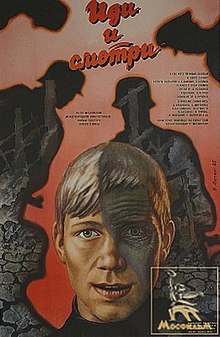
This
Russian film isn’t as well known in popular culture, but those who have seen it
consistently rank it as one of the best, if not the best, war films of all time. It was directed by Elem Kilimov,
who actually lived through the war and had to use a raft to escape the Battle
of Stalingrad. Unusually, this film was made during the Soviet era and for the
fortieth anniversary of victory, but it’s much more honest and less
propagandized than any other Russian film I’ve seen. The story follows a boy
in 1943 Belorussia who eagerly joins the partisans to fight behind German
lines. He is soon mentally and physically transformed by the horrors of war.
Come and See is so accurate,
even with some quirky beats and surrealistic filmmaking techniques, that it
comes off as a horror movie. But it’s horror that actually happened, so it
does not even serve the purpose of escapism. This makes for an intense and
terrifying film-viewing experience. The climax is a lengthy scene showing the
destruction of a Belorussian village. It happens so naturally that you get a
sense of what it would be like to have an invading force walk into your town and start killing, raping, and looting. By the way, the hammy behavior of many
of the Germans is only a slight exaggeration, as verified by veterans and
survivors of wartime Belorussia.
Come and See is the most
uncompromising look at World War II. There is no moment in the film that makes
one think it might be cool to participate in a war. The war is still justified for the Russians because the Germans are trying to wipe them out, but it is no glorious endeavor. It is thus the strongest
anti-war film and will make anyone think twice before risking such conflict.
Relevant
Recommendation: Defiance (2008)
#7:
Patton (1970)
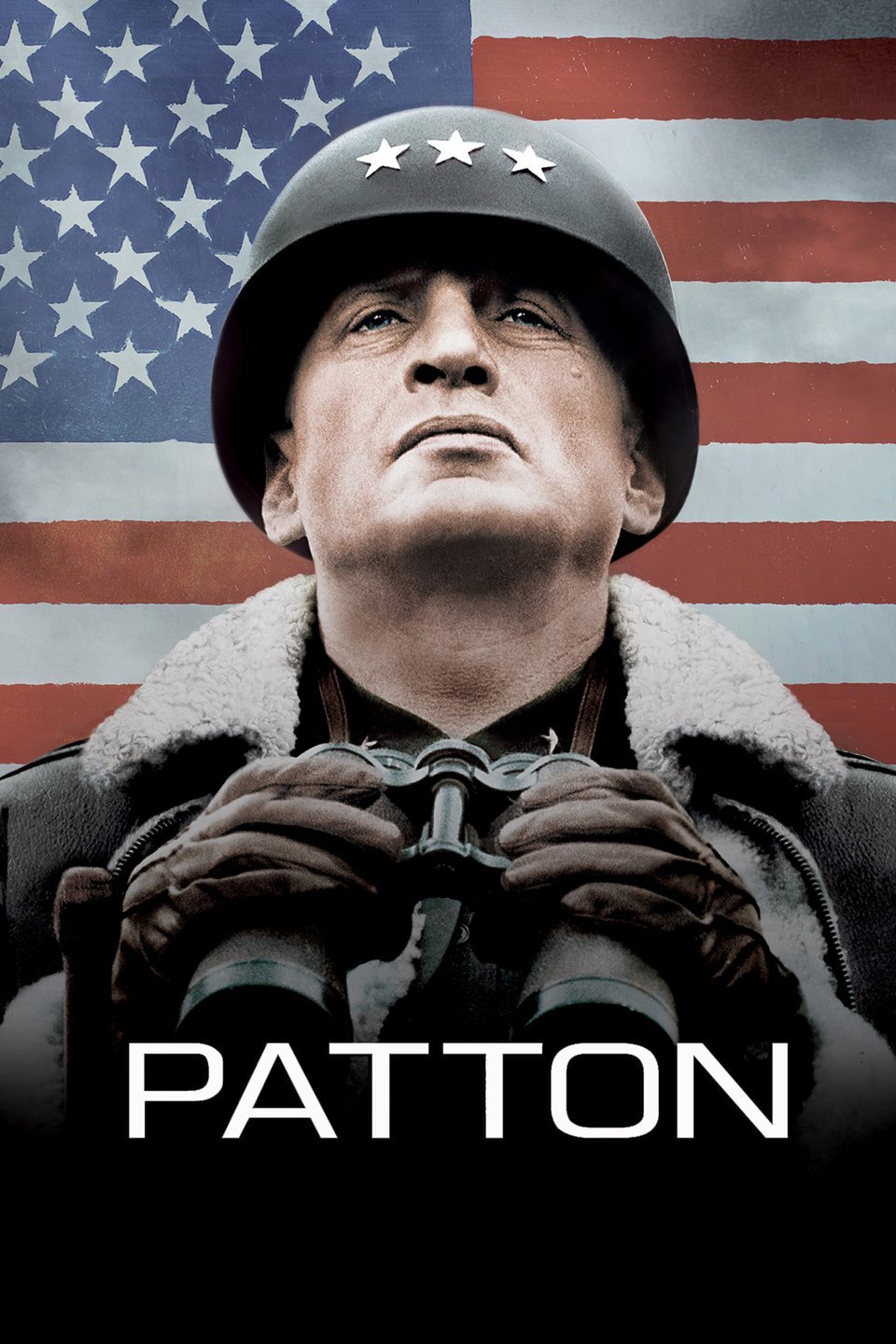
Patton is an epic
biographical film starring George C. Scott as the controversial General George
S. Patton. Scott’s portrayal is iconic, so much so that people who read history
imagine Scott’s gruff voice as opposed to Patton’s actual squeaky tones. One
critic labeled the film a “Rorschach Test” thanks to its ambiguity. Patton can
be interpreted as a great hero or glory-hounding bastard. The American war
effort can be seen as a heroic endeavor or a disgusting involvement in
violence. Thus almost everybody can appreciate this film, as it never veers
into heroic or anti-war propaganda, riding the perfect fine line in-between.
Aside
from delving into Patton’s character, the film also shows the development of
America’s military involvement. At the start of the film it’s having trouble
facing up with Rommel’s experienced Afrika Korps. By the end it’s leading the
charge through France into Germany. The movie’s primary focus isn’t battle
scenes. In fact much of what was filmed in this area was cut out. But what’s
there is done well. One criticism viewers may have is the scenes of Germans
constantly wondering what Patton is up to and declaring him America’s best
general. Recent scholarship has shown that Patton was not quite that especially
feared.
Patton
doubles as a great portrayal of history and as a deep character study.
Relevant
Recommendation: The Gallant Hours (1960)
#8:
The Longest Day (1962)
I
debated whether to include this or A Bridge Too Far. Ultimately I went with The Longest Day because not only is it
more of a classic but it covers a more pivotal event. Operation Overlord was
the successful opening of a new front in Europe that hastened the end of the
war. A large Allied force stormed the beaches of Normandy in France. German
resistance was much lighter than it could have been as Hitler and his generals
had been successfully tricked into anticipating an Allied invasion further
northeast at Calais.
The Longest Day, one of the great war epics of older Hollywood, looks at Operation
Overlord from both Allied and German perspectives. The characters are played by
a long list of well-known 60s actors and for cinephiles it’s fun to identify
major stars in small roles, especially a couple German actors that would later
pop up as James Bond villains. The film plays out like a documentary (even
incorporating bits of real footage), but with a heavy dose of action scenes. The
action itself is pretty impressive, though as an older movie it’s a far cry
from the realistic bloodbath of Saving
Private Ryan. There are night-time skirmishes between Allied paratroopers
and behind-the-lines Germans and of course the long fight at Omaha Beach, but
my personal favorite is a town battle near the end with an amazing long crane
shot.
The Longest Day is an epic
semi-documentary that is both heavily informative and entertainingly action-packed.
Also, being an older movie without the blood spurts and dismemberment, it's a good tool for introducing history to your children.
Relevant
Recommendation: A Bridge Too Far
(1978)
#9:
Letters from Iwo Jima (2006)

Letters
from Iwo Jima is the second half of Clint Eastwood’s Iwo Jima duology. While Flags of our Fathers focused on the American
marines who raised the flag on Mount Suribachi, Letters from Iwo Jima gives a rare view of the Japanese
perspective. Ken Watanabe stars as General Kuribayashi, the only Japanese general
to inflict more casualties on the marines than received (though in death tolls
the Japanese still suffered far worse). Kuribayashi had actually been to
America and thus was one of the few Japanese generals to break free from the Imperial Army's rigid tactical doctrine. Unfortunately, many of his subordinates still believed in traditional tactics borne out of a distorted view of the warrior spirit. This is a major point of conflict in the film.
The
actual central character is Private Saigo, who just wants to live and doesn’t understand
why everyone should sacrifice themselves so recklessly. His and other characters’
stories are fleshed out with various flashbacks that show how the Japanese
soldiers themselves are victims of the militant Japanese culture. Eastwood
successfully makes most of the action scenes non-cathartic. It’s a dark fact
that even realistically violent battle scenes can often produce catharsis among
the viewers, even though they know what they are seeing is horrible and happened to real people. The greatest achievement of course is giving a perspective of the Pacific
War that is lost even in much of scholarly history. Thanks to a paucity of
survivors and unfathomable (to westerners) tactics, the Japanese are
usually portrayed as a screaming horde, almost part of the hostile tropical
landscape. Letters from Iwo Jima
rectifies this and reminds moviegoers that the Japanese were just as human,
even if their society and culture had moved them into a dark, violent place.
Relevant
Recommendation: Battle of Okinawa
(1971)
#10:
Downfall (2004)

Closing
off this list is a German film by Oliver Hirschbiegel. Partially based on the
recollections of Hitler’s secretary Traudl Junge (who is a character in the
film), it covers the last days of Adolf Hitler’s life as well as the fall of
Berlin in general. As with many films on this list, it is almost unremittingly
dark. Watching a city collapse is not pleasant, even when most of the players
are Nazis and war criminals. Expect to see a lot of suicides in the last act.
While dark, it is fascinating to see the inner workings of the Nazi party,
which maintained its unique flavor even as its dream crumbled.
Bruno
Ganz turns in an amazing performance of Hitler, refusing to turn him into a
caricature. Realistically he is shown to have his tender moments, especially towards
his dogs. Ironically his most well-known scene is a certain rant that has been
turned into an internet meme. It is a bit unfortunate that this happened, since
this is the critical moment when Hitler finally accepts reality, that there is no hope
and he has lost the war. Hopefully those familiar with the meme can separate it from the original source. Ulrich Matthes’ performance as Joseph Goebbels is also
praiseworthy. He not only looks a lot like the minister of propaganda, but nails
his obsessive hero-worship of the Fuhrer. In addition to Hitler’s inner circle are a
few military and civilian characters who deal with events happening outside the
bunker.
Downfall
captures the chaos and tragedy amidst the Third Reich’s last days and should be
viewed by anyone interested in a German perspective.
Relevant
Recommendation: Conspiracy (2001)
So there you have it, ten films worth watching to get an overview of World War II without reading a lot of books, though I always encourage people to dig deeper if they're interested.

Thanks for sharing this list. I guess for this type of movie, mainly the ones I've seen have been oscar movies. So I know I've seen Schindler's List as well as the "Relevant Recommendation" with Schinler's List(The Pianist). Although I think "The Pianist" was from 2002 not 2004.
ReplyDeleteI know for a long time, Patton was on my list as one of the "most recent" best picture oscars that I hadn't seen. I'm not sure if I finally watched it or not. I suppose I would probably remember if I had..
You got me reading a little more about Schindler's list in wikipedia and I noticed something I hadn't known, that Oskar Schindler was born into a Sudeten German family. All of my dad's paternal grandparents were also Sudeten Germans(His maternal grandparents were ethnic Germans from what is now Slovenia and was Austria-Hungary). My great-grandparents were born in Ronsberg, Austria-Hungary(now Poběžovice, Czech Republic) only about 15 miles from Germany a lot further west than where Schindler was from.
The three links below are from a handwritten letter that I have. It is from some Stadick relation about when he was in the US Army after WWII and going thru that area. The US Army was going thru Czechoslovakia as fast as they could to gain control of as much area as they could before the Russians got to it. This Stadick relation new that some of his ancestors were from Ronsberg/Poběžovice so he was trying to do a little geneology research why quickly moving thru the area with the US Army. One story talks about the guy about hand his gunbelt to a girl to have his picture taken with a family member when he was told that she would probably shoot him if he handed her the gunbelt. The story is probably exaggerated some, it is hard to believe someone in the US Army would hand his gunbelt to anyone. But interesting how particularly the Sudeten Germans weren't necessarily happy control of Czechoslovakia going to Allied forces..
http://townoak.com/stadick/0605/th_p7.jpg
http://townoak.com/stadick/0605/th_p8.jpg
http://townoak.com/stadick/0605/th_p9.jpg
edstadick@yahoo.com
Hey Ed, thanks for the links! My family was barely involved in World War II so I always get a little envious reading about other family histories. My dad's side of the family came from Czechoslovakia as well, though they were Bohemians, not Germans. Poland also had an ethnic German population that actually experienced some murders and persecution in the build-up to WWII (giving Hitler a moral pretext for war, if an exaggerated one). It must be fascinating to learn what one's extended family was up to during a major event. There's lots of personal stories still to be discovered.
Delete